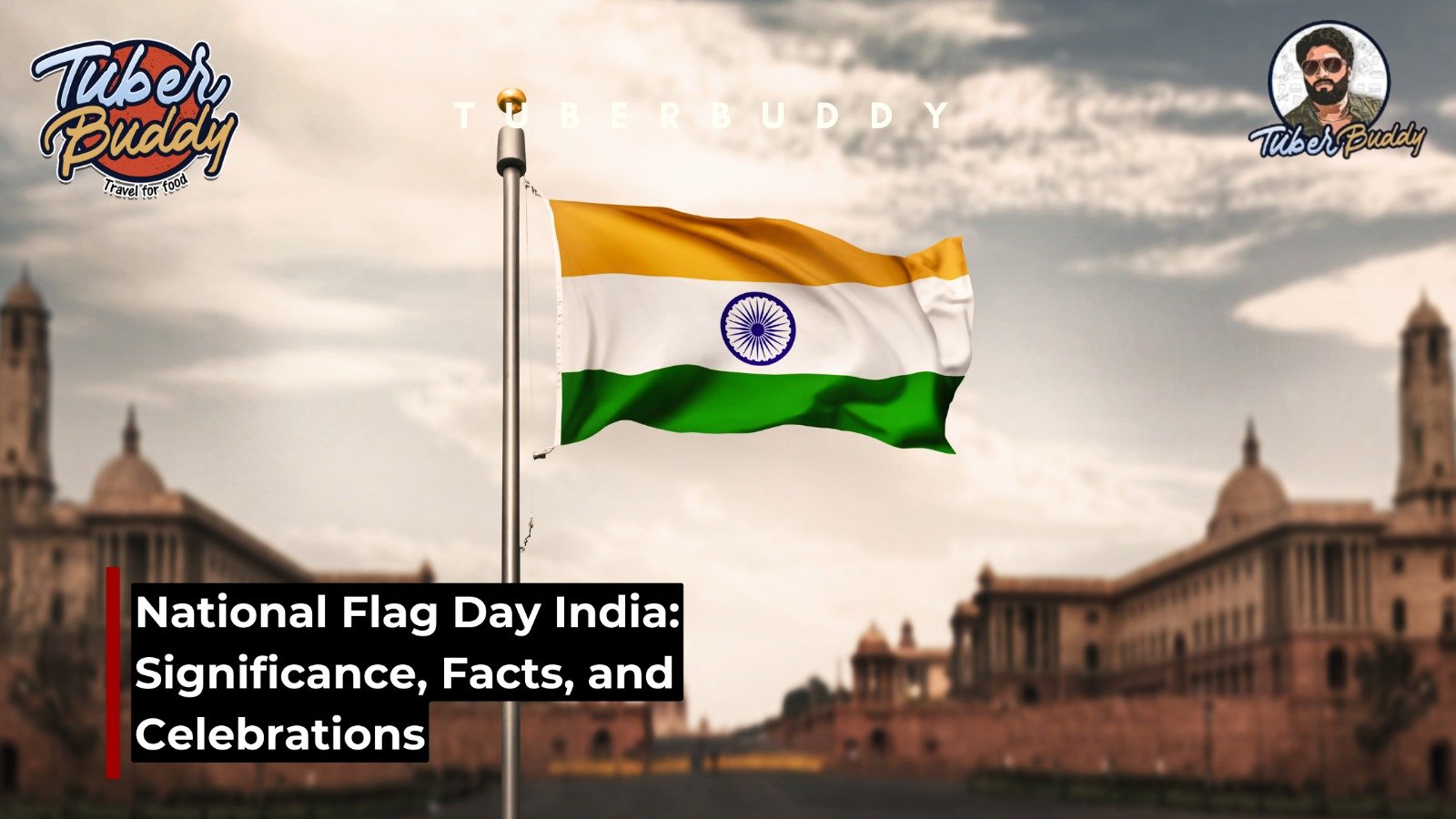National Flag Day India: Significance, Facts, and Celebrations

When you see the Indian national flag fluttering in the sky, what comes to your mind? Pride, honor, sacrifice, and unity—these are not just words; they define the spirit behind National Flag Day in India.
Every year, India celebrates this special day to honor the legacy, sacrifice, and history associated with Tiranga — the tricolor flag of India. While many confuse this day with Independence Day or Republic Day, National Flag Day in India has its unique significance.
This blog examines why we observe National Flag Day in India and how people nationwide participate in this celebration of patriotism.
Why National Flag Day India is Celebrated
National Flag Day India is observed on July 22 every year to mark a significant event in the country’s freedom struggle. On this date in 1906, the first national flag of India was hoisted at the Parsee Bagan Square (Green Park) in Kolkata. Though it looked different from today’s flag, it sowed the seeds for the symbol of freedom that we salute today.
The day was not officially recognized for many years but has recently gained more awareness thanks to the government’s push to celebrate and recognize India’s rich flag history. It serves as a reminder of:
Honoring the countless freedom fighters who carried the flag as a symbol of their sacrifice.
- Tracing the journey of our national flag from the days of colonial rule to the proud tricolor it is today.
- The importance of respecting the flag and what it represents — freedom, unity, democracy, and sacrifice.
Significance of the Indian National Flag
The Indian flag isn’t just fabric; it carries deep symbolism:
- Saffron: Courage, sacrifice, and strength
- White: Peace, truth, and honesty
- Green: Prosperity, faith, and fertility
- The 24-spoked Ashoka Chakra stands as a symbol of eternal movement, truth, and the guiding wheel of dharma.
National Flag Day India reminds us to honor these values not just once a year, but every day in how we live and respect our nation.
How National Flag Day in India is Celebrated
Although National Flag Day India doesn’t involve national holidays or big parades like Independence Day, many organizations, schools, and government offices use this day to educate people about the flag’s history and its proper usage.
Here’s how the celebration typically unfolds:
1. Flag Hoisting Ceremonies
Institutions often organize small yet meaningful flag hoisting events. The national anthem is sung, and speeches are given on the importance of the flag.
2. Educational Activities
- Schools conduct quizzes, drawing competitions, and debates around the topic of the national flag.
- Workshops and seminars are organized to discuss the history, laws, and etiquette associated with the flag.
3. Online Campaigns & Social Media Posts
With the rise of digital platforms, today’s youth and influencers actively use social media to promote awareness. Hashtags like #NationalFlagDayIndia trend, encouraging people to post pictures, stories, and facts about the Indian flag.
4. Public Awareness Drives
Certain organizations collaborate with local communities to distribute pamphlets and organize talks about the history of the Indian flag and how to respectfully handle it.
5. Special Exhibitions
Museums and art galleries sometimes host exhibitions showcasing the evolution of the Indian flag through various historical phases.
Why It Matters to Celebrate
The National Flag Day in India celebration is more than a tradition. It instills a sense of national pride, educates younger generations, and reminds everyone that our flag stands for the struggles, sacrifices, and dreams of 1.4 billion people.
Respecting our flag means respecting our freedom fighters, our Constitution, and our shared values of unity in diversity.
How You Can Participate
Even if there’s no official program near you, you can:
✅ Express your national pride — switch your profile picture to the Indian flag today.
✅ Educate your friends or children about the history and importance of our flag.
✅ Share informative content on social media to spread awareness.
✅ Ensure you know the flag code of India so you respect the flag’s dignity.
Conclusion: Saluting the Symbol of India
The Indian National Flag is not just a piece of cloth; it is the heartbeat of our nation’s history and its future. By observing National Flag Day in India, we show that we honor our past, value our present, and are committed to a united future.
So next time you see the tricolor waving against the sky, take a moment to reflect on the countless sacrifices made under its shade.
Jai Hind!
👉 Follow TuberBuddy for more inspiring content on India’s heritage, festivals, and culture!
